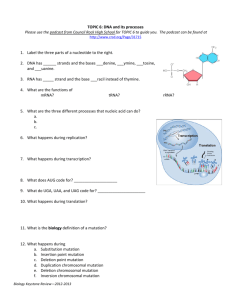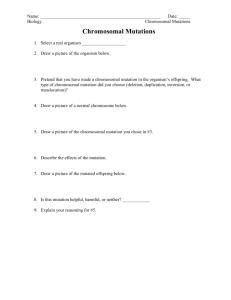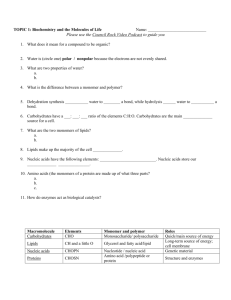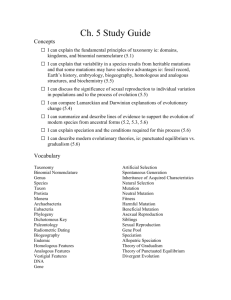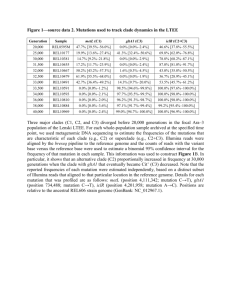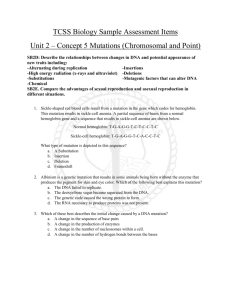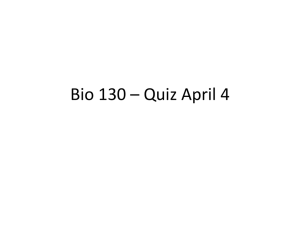Cellular Energy & DNA Processes Worksheet: Biology Review
advertisement
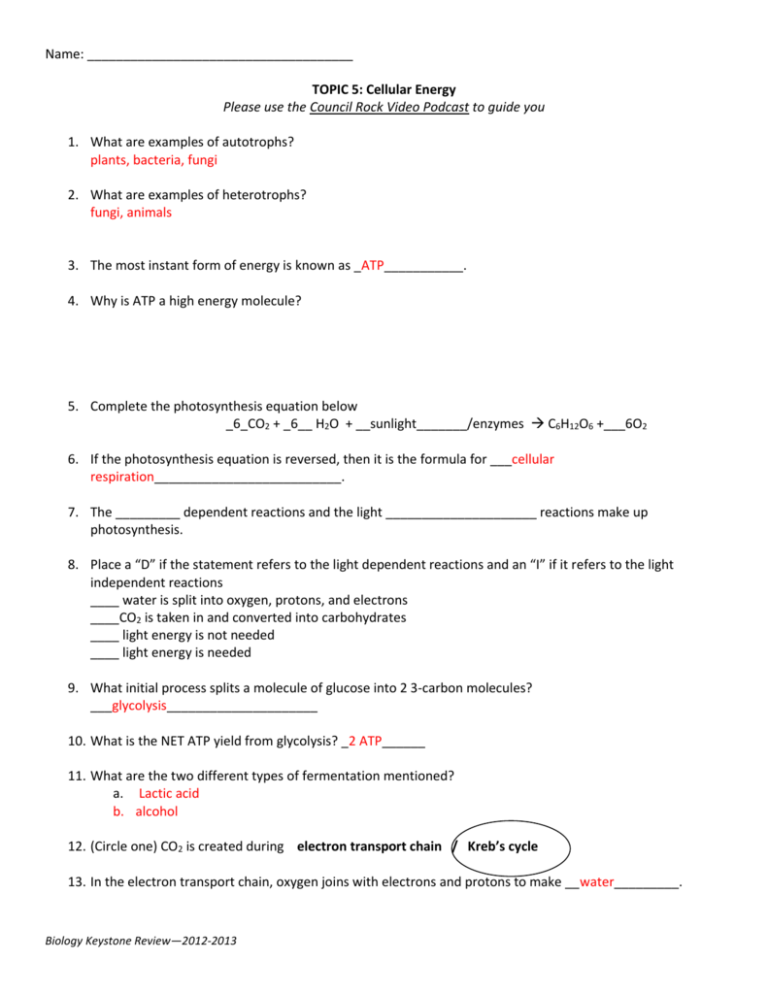
Name: _____________________________________ TOPIC 5: Cellular Energy Please use the Council Rock Video Podcast to guide you 1. What are examples of autotrophs? plants, bacteria, fungi 2. What are examples of heterotrophs? fungi, animals 3. The most instant form of energy is known as _ATP___________. 4. Why is ATP a high energy molecule? 5. Complete the photosynthesis equation below _6_CO2 + _6__ H2O + __sunlight_______/enzymes C6H12O6 +___6O2 6. If the photosynthesis equation is reversed, then it is the formula for ___cellular respiration__________________________. 7. The _________ dependent reactions and the light _____________________ reactions make up photosynthesis. 8. Place a “D” if the statement refers to the light dependent reactions and an “I” if it refers to the light independent reactions ____ water is split into oxygen, protons, and electrons ____CO2 is taken in and converted into carbohydrates ____ light energy is not needed ____ light energy is needed 9. What initial process splits a molecule of glucose into 2 3-carbon molecules? ___glycolysis_____________________ 10. What is the NET ATP yield from glycolysis? _2 ATP______ 11. What are the two different types of fermentation mentioned? a. Lactic acid b. alcohol 12. (Circle one) CO2 is created during electron transport chain / Kreb’s cycle 13. In the electron transport chain, oxygen joins with electrons and protons to make __water_________. Biology Keystone Review—2012-2013 14. By going through glycolysis, Kreb’s Cycle, and Electron transport chain, a cell can make between _34____ and _38_____ ATP as opposed to just the 2 of glycolysis. Name: _____________________________________ TOPIC 6: DNA and its processes Please use the Council Rock Video Podcast to guide you 1. Label the three parts of a nucleotide to the right. 2. DNA has ______ strands and the bases ___denine, ___ymine, ___tosine, and ___uanine. 3. RNA has _____ strand and the base ___racil instead of thymine. 4. What are the functions of mRNA? tRNA? 5. What are the three different processes that nucleic acid can do? a. b. c. 6. What happens during replication? 7. What happens during transcription? 8. What does AUG code for? ____________________ 9. What do UGA, UAA, and UAG code for? ______________________ 10. What happens during translation? 11. What is the biology definition of a mutation? 12. What happens during a. Substitution mutation b. Insertion point mutation c. Deletion point mutation Biology Keystone Review—2012-2013 rRNA? d. e. f. g. Duplication chromosomal mutation Deletion chromosomal mutation Inversion chromosomal mutation Translocation chromosomal mutation Biology Keystone Review—2012-2013
